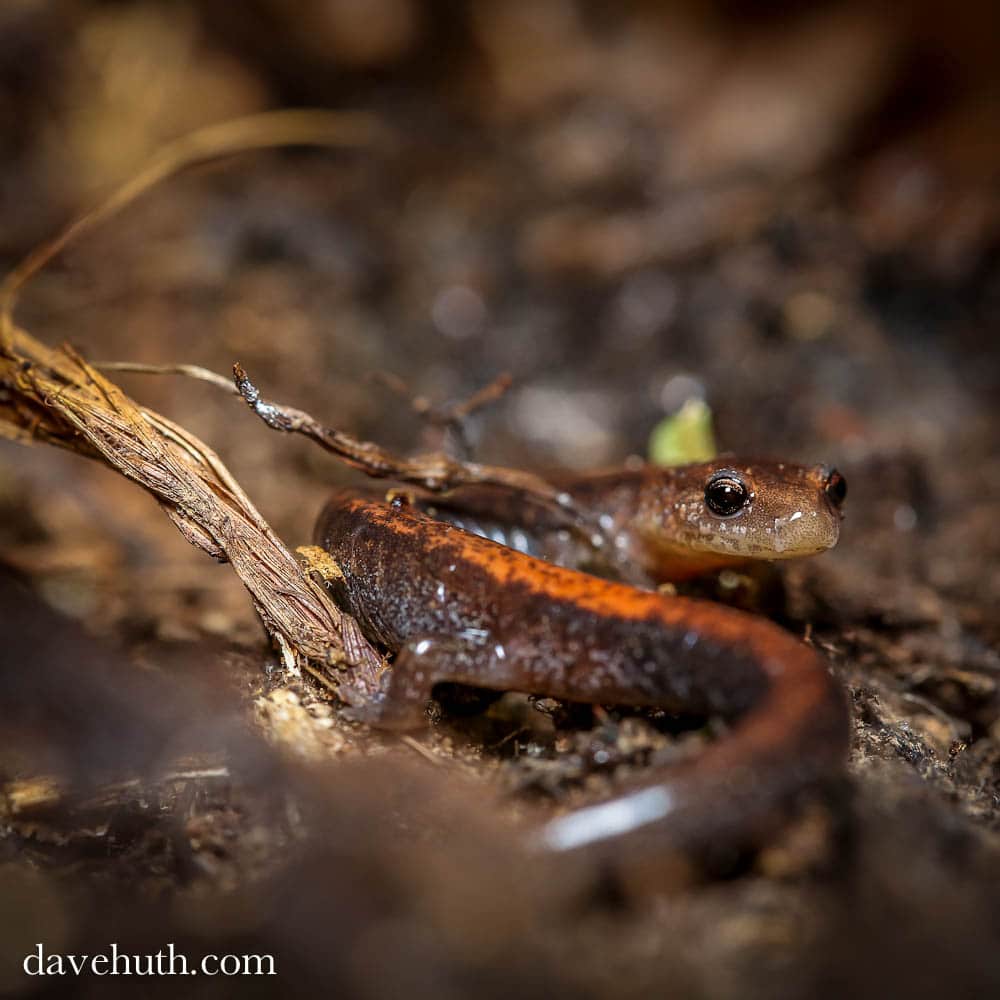2014 is the Year of the Salamander
Partners in Amphibian and Reptile Conservation (PARC) — a national coalition of biologists, land managers, and individuals dedicated to the conservation of amphibians, reptiles, and their habitats — has designated 2014 as the Year of the Salamander, a time to illuminate, educate, and celebrate all things salamander. In salute, here are a few stories from the Harris Center’s salamander files.
Salamanders are Everywhere

Turn over five logs in the woods, and you’re likely to find a redbacked salamander under four of them.
(photo © Dave Huth)
I once heard of a biologist with a memorable party trick: regardless of the party’s location, he claimed that he could step outside and produce, within fifteen minutes, a wild salamander. I’m not sure that he’d have much success at a New Year’s Eve party in Hancock, New Hampshire, but I suspect he knew this secret about the redbacked salamander: they’re everywhere. Researchers at the Hubbard Brook Experimental Forest in northern New Hampshire discovered that the biomass — defined as the total mass of living organisms in a given place at a given time — of redbacked salamanders is more than twice that of all birds in that particular patch of woods, even during peak bird breeding season. That’s a lot of salamanders, given the fact that these slender amphibians are only the size of your pinky finger. They spend their wild lives tucked away under logs, rocks, and leaf litter, where they dine on ants, termites, snails, and other forest invertebrates – up to 1.5 million prey items per hectare per year (!), according to one study from New York.
And what about our woods? Last fall, Environmental Studies students from Keene State College initiated a natural resource inventory of Harris Center lands. As part of their work, the students searched for salamanders in 1-m2-quadrats along Harris Center trails. They found redbacked salamanders in 27 of their 34 study sites. Put another way: turn over five logs in the woods near us, and you’re likely to find a redbacked salamander under four of them!


